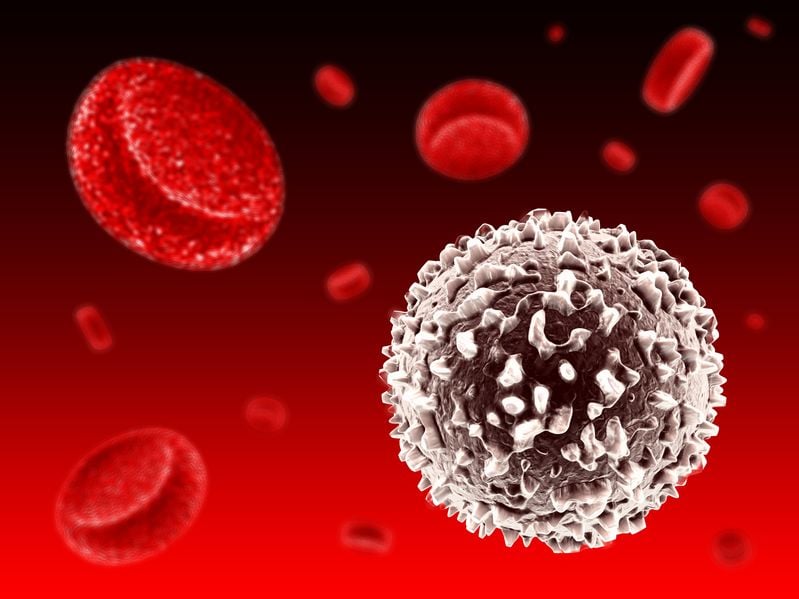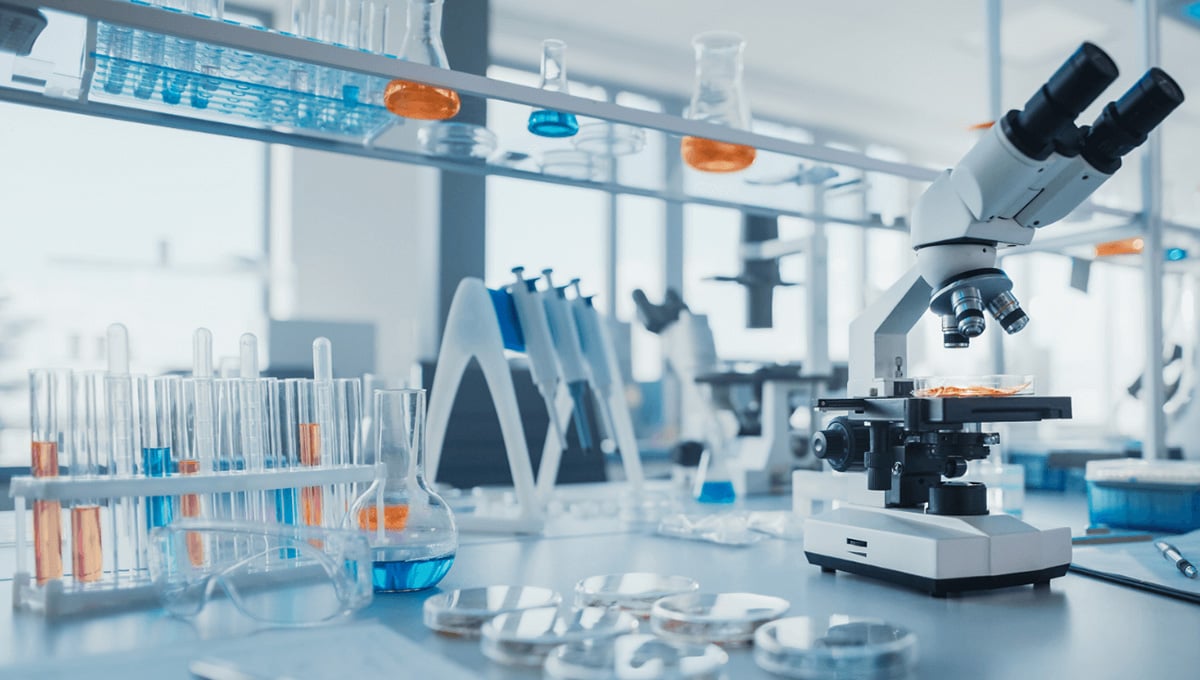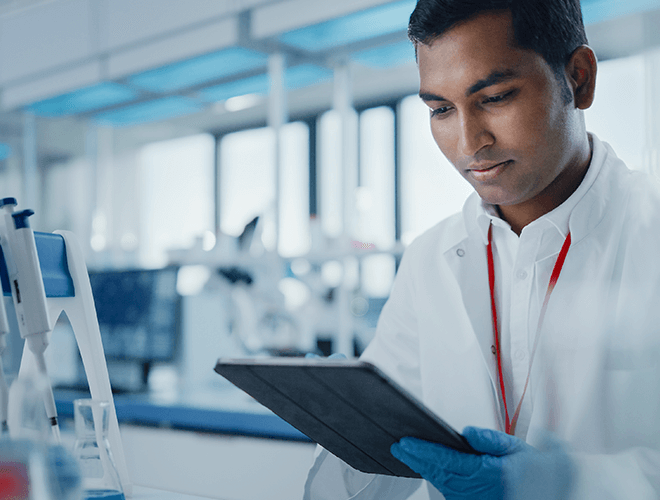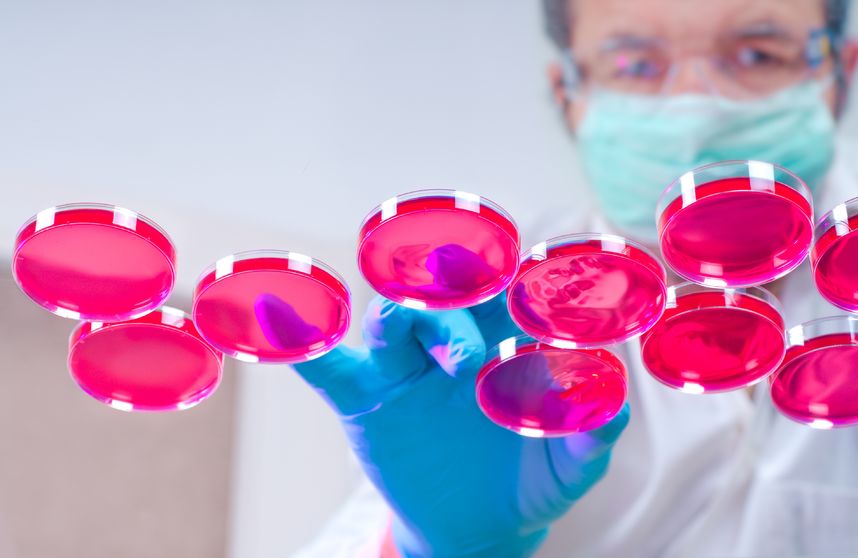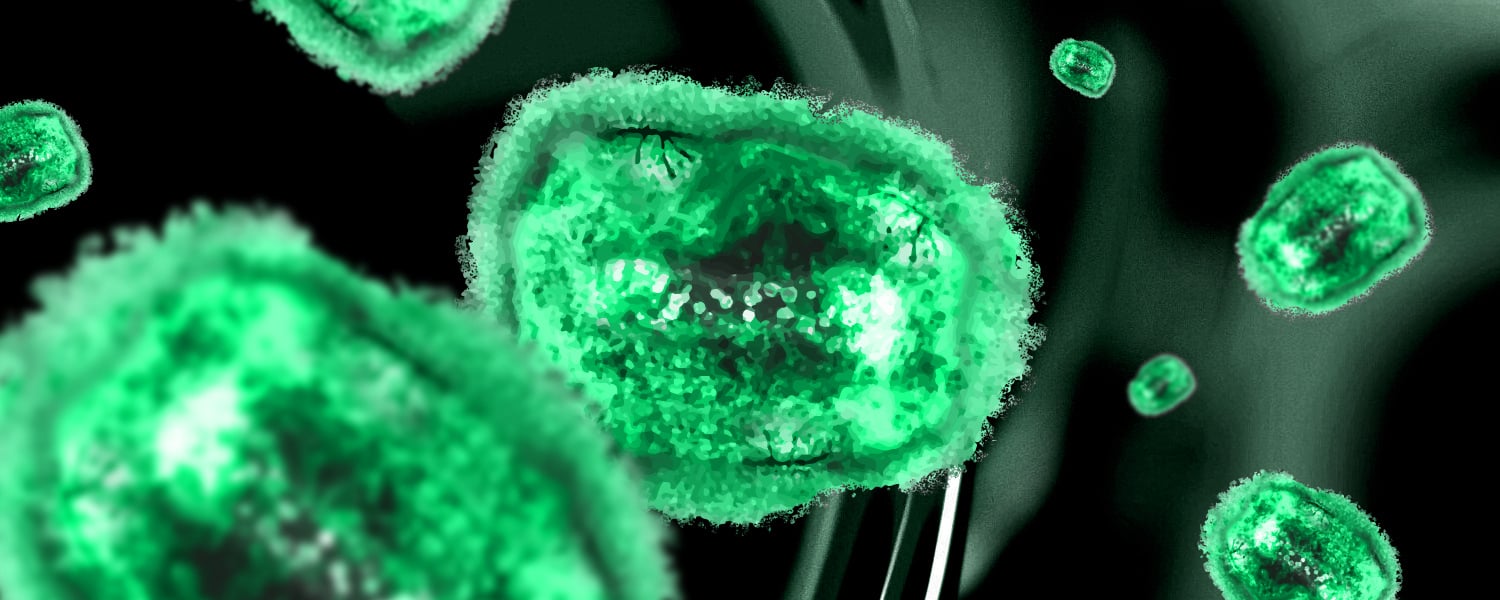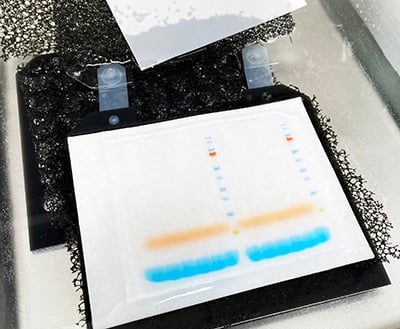The human immune response is a complex and dynamic system involving several different cell types and hundreds of signaling molecules and pathways. Immunological research can give insights into the mechanisms underlying responses to allergies, bacterial, fungal, or viral infections, as well as autoimmune diseases, such as rheumatoid arthritis. To investigate the immune response to certain stimuli, one can look at peripheral blood mononuclear cells (PBMC).
These leukocytes are isolated from whole blood and comprise monocytes (macrophage precursors), lymphocytes (both B and T cells), and a small percentage of other immune cells, such as dendritic cells. They must be isolated from freshly drawn blood, but can then be cryopreserved at ultra-low temperatures in liquid nitrogen and remain viable for decades with no significant changes to viability or functionality. After a careful thawing procedure, cryopreserved (c-) PBMCs can be stimulated or treated with various immunomodulatory agents or drugs in vitro.
Applications
The effects of various perturbations can be evaluated via several techniques—an old favorite is the enzyme-linked immunosorbent assay (ELISA), which allows for the accurate detection and quantification of cytokines, chemokines, and other signaling molecules. More recently, the ELISpot assay has gained popularity because of its greater sensitivity and other advantages. The multiplex bead array assay (Luminex) offers another alternative, with the substantial advantage of allowing multiplexing—meaning several cytokines or chemokines can be detected at the same time on the same kit, with little to no cross-reactivity.
PBMC culture can also be useful to the field of proteomics, and more specifically mass spectrometry-based proteomics. My own research involves the re-stimulation and treatment of patient-derived PBMCs, which are then processed for analysis via mass spectrometry. Samples can be split into cell culture supernatants (containing secreted proteins) and cell lysates (containing intracellular proteins) and analyzed separately.
Finally, PBMCs can be analyzed via flow cytometry, and each sub-population of cells can be isolated via fluorescence-activated cell sorting (FACS). Other parameters, such as cell surface markers, viability, and proliferation, can also be assessed via flow cytometry.
Isolation
The method for mononuclear cell isolation was first developed by Boyum in 1968. PBMCs are isolated by density gradient centrifugation, as different components of the blood have different densities and can be separated accordingly. The density gradient medium most commonly used (Ficoll or Ficoll-Paque) contains sodium diatrizoate, polysaccharides, and water, and has a density of 1.08 g/mL. This medium is denser than lymphocytes, monocytes, and platelets (meaning these will remain above it), but less dense than granulocytes and erythrocytes, which will drop below it.
To isolate PBMCs, whole blood, diluted with PBS, is gently layered over an equal volume of Ficoll in a Falcon tube and centrifuged for 30-40 minutes at 400-500 g without brake. Four layers will form, each containing different cell types—the uppermost layer will contain plasma, which can be removed by pipetting. The second layer will contain PBMCs and is a characteristically white and cloudy “blanket.” These cells can be gently removed using a Pasteur pipette and added to warm medium or PBS to wash off any remaining platelets. The pelleted cells can then be counted and the percentage viability estimated using Trypan blue staining. Cells can be used immediately or frozen for long-term storage.
Cryopreservation
To preserve PBMCs at ultra-low temperatures in liquid nitrogen, dimethyl sulfoxide (DMSO) is used as a cryoprotectant to reduce the formation of ice crystals and prevent cell damage. However, DMSO is toxic to cells at higher temperature and must be washed off immediately once cells are thawed. To freeze, freshly isolated PBMCs are resuspended to 5-10 x 106 cells/mL in freezing medium containing 10-20% DMSO and 40% fetal bovine serum (FBS) or human serum albumin (BSA) in RPMI-1640 medium, and are placed inside a freezing container (i.e. Mr. Frosty) at -80°C overnight to allow gradual and even cooling. The following day, samples can be moved to a liquid nitrogen tank for long-term storage.
Thawing and resting of PBMCs
cPBMCs must be thawed carefully to avoid loss of cell viability and functionality. Samples are removed from liquid nitrogen and placed on ice, after which they are thawed in a 37°C water bath. Once there is a small crystal of ice left in the bottom on the tubes, 500 µL warm medium supplemented with 10% FBS, 1% penicillin/streptomycin, and L-glutamine is added drop-wise. The cells are then transferred to Falcon tubes containing 10 mL warm medium, and centrifuged for 5 minutes at 500 g to wash off the toxic DMSO. This wash step is repeated and the cell pellet is then resuspended in medium to count as before. Once thawed, PBMCs must be rested overnight to remove any apoptotic cells—this increases viability and improves functionality, and involves incubating the freshly thawed cPBMCs in supplemented medium for approximately 18 hours. After this resting period, cells must be washed, and are then ready to be used in culture or any other assay.
PBMC culture
PBMCs can be cultured for 5-7 days in 24- or 96-well plates, using supplemented RPMI-1640 medium, and incubated at 37°C in a humidified, 5% CO2 atmosphere. PBMCs do not readily proliferate without stimulus and should be plated at a density of 0.5-1 x 106 cells/mL in a total volume of 0.5-1 mL in a 24-well plate, and 200 µL in a 96-well plate. Because PBMCs comprise both lymphocytes and monocytes, some cells will adhere to the plate (monocytes/macrophages) while others may be in suspension (lymphocytes). This must be taken into account when culturing—for example, round- or V-bottom plates may be more appropriate if cells need to be pelleted by centrifugation. To induce proliferation, phytohemagglutinin (PHA) or lipopolysaccharide (LPS) can be added to the culture medium at a concentration of 1-5 µg/mL.
While PBMCs may seem tricky to work with at first, their analysis can shed light on mechanisms underlying immune diseases and can be of huge benefit to the scientific and medical research worlds.
